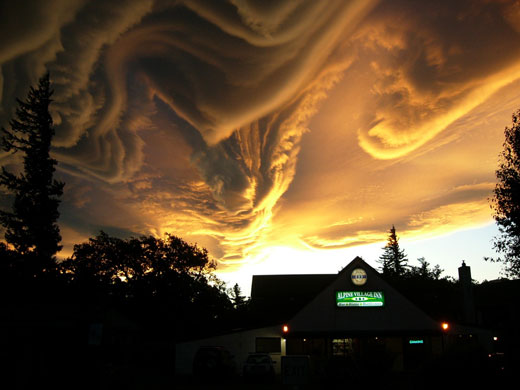So why are clouds classified anyway?
- Complaining about the Mainland - 17th August, 2024
- New island designation – is it just greenwash? - 26th April, 2024
- Police and Crime Commissioners – a solution or a problem? - 21st April, 2024
Great news, friends, those crazy scientists have discovered a new type of cloud! Actually, it’s not even scientists but some well-meaning amateur who’s formed the Cloud Appreciation Society. News outlets all over the world have eagerly fixed on what could possibly be classed as a bit of good news – or at least not obviously bad anyway.

Experts at the Royal Meteorological Society are now attempting to have the new cloud type, which has been named “Asperatus” after the Latin word for rough, officially added to the international nomenclature scheme used by forecasters to identify clouds. If successful, it will be the first variety of cloud to be classified since 1953.
Well good for them. I’ll bet those boffins at the Royal Meteorological Society were delighted when the Cloud Appreciation Society chap floated past, putting them in the media spotlight for a moment or two. Professor Paul Hardaker, RMS Chief Executive, said rather grudgingly of the cloud registration process “The process is a long and convoluted one to get through”. I’ll bet it is. As no clouds have been added to the list for more than half a century, he might have been a little more honest and said “Nobody alive today can remember anyone actually wanting to add a cloud type to the list anyway, so if you’re looking for a process you’ve come to the wrong place, chum. We’ll probably leave the file in the kitchen for a few weeks and then toss a coin or something”. And what is it about new cloud classifications? I mean, why are clouds classified anyway? What’s the idea? Certainly clouds are different, but surely they differ continuously. Are they really, as the International Cloud Atlas suggests, divided into distinct genera and species? Or is this just an arbitrary nomenclature we like to apply to them? I guess it makes it convenient to describe clouds, so it’s probably not entirely pointless. But to get excited at the ‘discovery’ of a new ‘species’ is a bit unnecessary. If cloud classification really mattered, don’t you think that somebody might have looked into it a bit more since 1953? Still, there’s no harm in paying attention to clouds. They’re pretty harmless at worst. The main – possibly the only – notable in the Cloud Appreciation Society is one Gavin Pretor-Pinney. Responsible for starting the UK revival of the infamous alcoholic spirit absinthe, author and artist Pretor-Pinney was founder of The Idler magazine, and author of the very well-received 2007 book The Cloudspotter’s Guide. He seems to genuinely love clouds, even naming his daughter Flora Cirrus. Now his cunning ‘new cloud’ stunt has managed to propel the idea that clouds are fun into the public conciousness. He writes:
At The Cloud Appreciation Society we love clouds, we’re not ashamed to say it and we’ve had enough of people moaning about them. Read our manifesto and see how we are fighting the banality of’blue-sky thinking’.
How can one not support such a simple idea? Clouds are fun and interesting. Enjoy watching them, as it probably doesn’t matter if there’s a new type discovered or not.


Are the Asperatus clouds caused by HAARP?
And it wouldn’t be a British summer without laying on the grass saying:” I can see a dragon… look there’s a witch…and a train…and a man waving a stick…”
Hey now! This from a guy who posted all excited about a type of bee. So … why bother classifying bees? It’s not like you can tell the weather by looking at them eh?
I love clouds. Clouds tell me all kinds of things about the weather. Take a look at some nice big fluffy cumulus clouds for a while. When they look like soft ice cream its because there is very little wind aloft. So the weather is yours for a while. If they’re blowing over on top well then its windy up there. Gray bottoms are an indication of both the “strength” of the cloud and moisture content, but we all know that eh? Like, rain doesn’t come from fluffy white ones. And the bottom of those things is the top of the lift band, which happens to be one of the neatest places in our biosphere to spend some time.
Oh and clouds aren’t just wispy nothings: they are solid enough to deflect wind, so I could (but haven’t) fly *over* them by getting on the upwind side and riding the ‘ridge lift’ up. And the edges act as a magnifier for sunlight. Weird science, but using that bit of info helps if you want to fly up the face of one.
Clouds are cool in the same way different species of flora and fauna are cool. You just have to be into what it all means and how it relates to life in general.
I’m going flying on Saturday 🙂